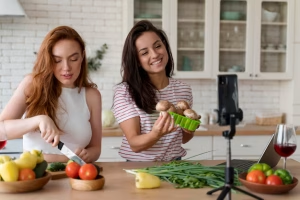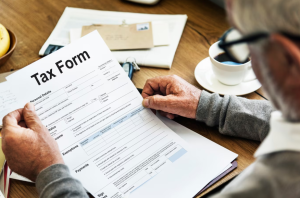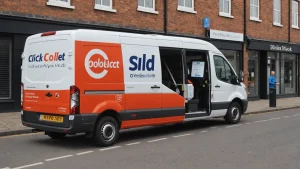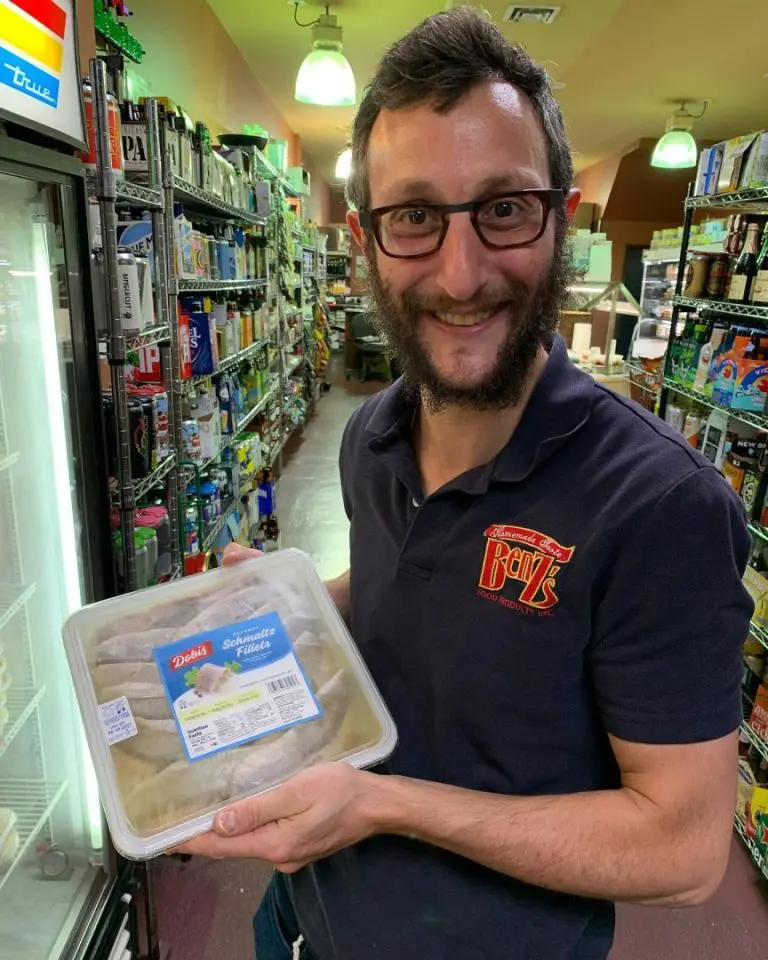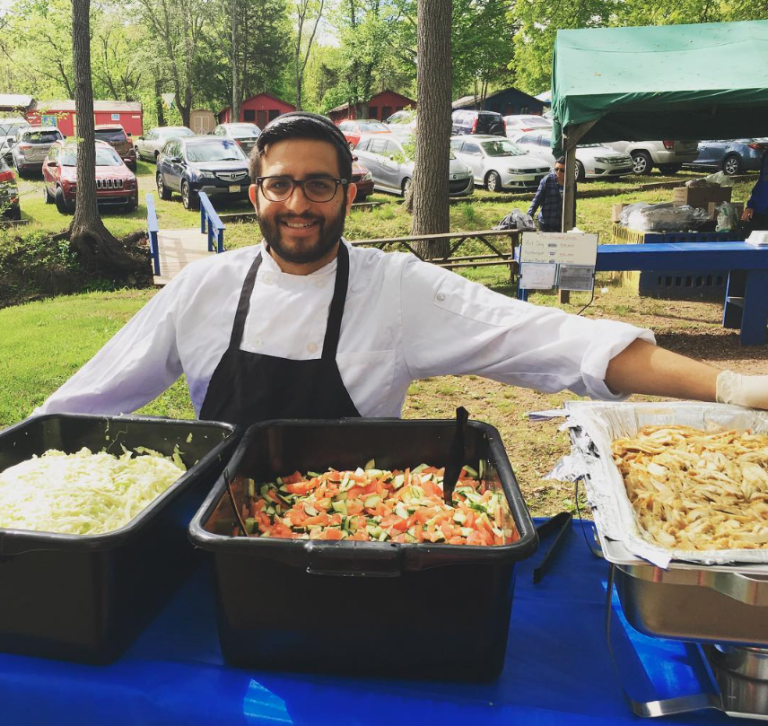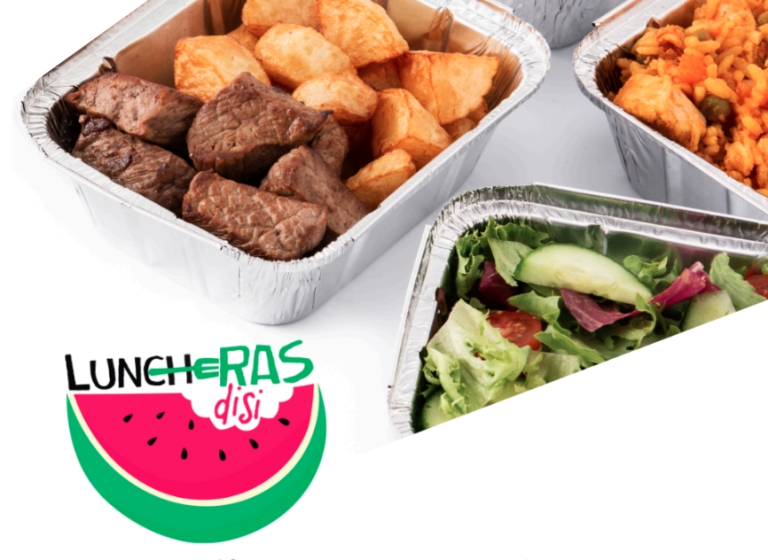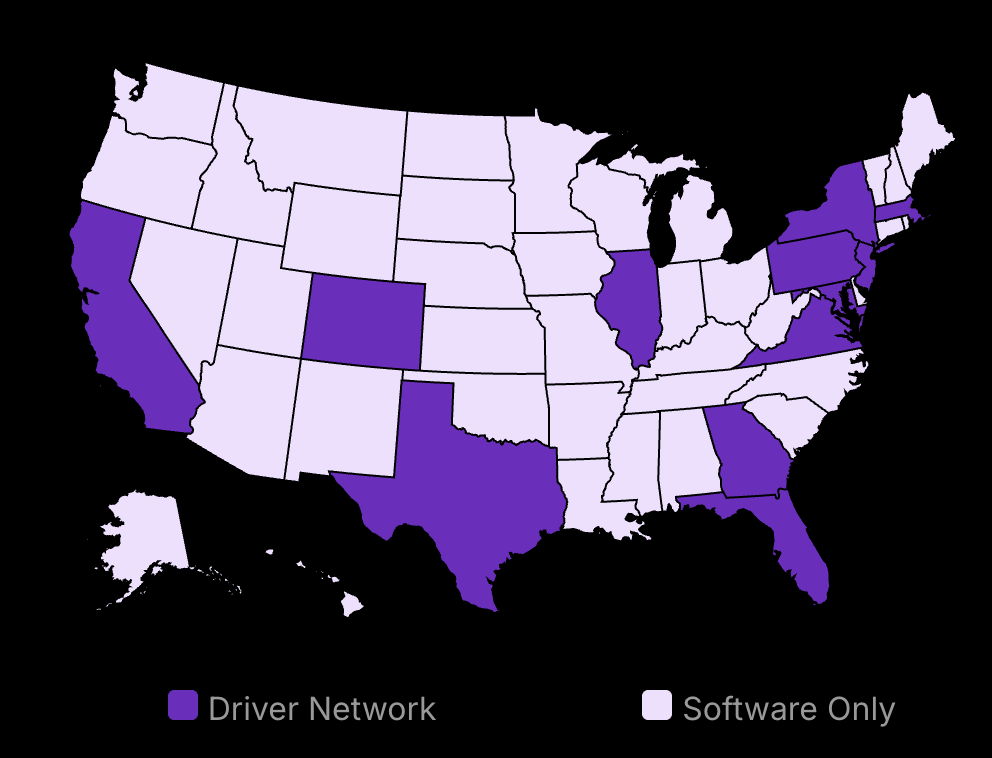SMS marketing for restaurants is changing fast, offering businesses direct access to hungry customers at just the right time. By leveraging marketing software and appointment reminders through text, restaurants can engage customers in a way that fills tables and boosts sales.
This isn’t just about sending texts – it’s about using the right message at the right moment to drive action. For instance, take Maria’s Bistro in Chicago. They were struggling with unsold lunch specials each week. After incorporating SMS marketing, they were able to fill their tables by texting lunch deals to nearby office workers at 11 AM. With a local number and super easy-to-use user interface, they quickly turned things around. Simple, direct, and highly effective.
However, most restaurants make the mistake of sending the same generic messages to all their contacts. “10% off dinner!” doesn’t work anymore. Today’s customers expect personalized offers, such as discounts based on their past orders or dietary preferences, which can be easily integrated into templates and automated via SMS marketing services.
SMS Marketing Growth: The SMS marketing industry is projected to reach a market value of $12.6 billion by 2025.
In this guide, you’ll learn how to:
Build a permission-based SMS list that really wants to hear from you
Discover the optimal timing for sending texts that get responses and avoid filling your inbox with irrelevant messages
Personalize texts to make each customer feel valued and unique, not just another name on a list
See real examples from restaurants driving sales and increasing customer loyalty through SMS campaigns
The strategies we’ll share are grounded in data from restaurants using SMS marketing in 2025. Whether you’re a small business or managing a larger restaurant chain, these practical steps will help you bring more customers through your doors and boost your text marketing efforts. By using SMS services, like EZ Texting, and integrating them into the same platform as your other marketing tools, you can send personalized, timely messages that drive engagement and growth.

Save 80% of delivery management time
We handle everything:
- Dedicated operations manager
- Real-time tracking dashboard
- Automated customer notifications
- Urgent issue resolution
Implementing Successful Restaurant SMS Marketing Campaigns
Boost customer loyalty with personalized SMS campaigns.
Ensure legal compliance by securing customer consent.
Optimize message timing and frequency for better engagement.
Gather Customer Consent
To start an SMS campaign, you need your customers’ permission. This isn’t just good practice, it’s the law. Begin by attracting interest with enticing offers or discounts. A free appetizer on their next visit, for example, works well. Incentives like these make signing up appealing.
Consumer Willingness: 70% of consumers will sign up for SMS marketing messages.
Promote your SMS list through various channels. In-store signs can catch the eye of frequent visitors. Don’t underestimate the reach of social media. Regular posts can grab the attention of online followers who might otherwise slip through the cracks.
Compliance is non-negotiable. When customers opt-in, ensure they know what they’re signing up for. This might include explaining how often you’ll be texting them and the content types, such as promotions or updates. Verify that you collect explicit consent, keeping records in case you need to show compliance later.
Techniques to Increase Opt-In Rates
Encouraging customers to opt-in organically involves clearly communicating the benefits. Consider a simple sign-up process, perhaps via a keyword to a shortcode, which is quick and hassle-free. Offering immediate gratification, like a discount code upon sign-up, can also drive quick action.
SMS Subscriptions: 91% of consumers are subscribed to at least one SMS marketing program.
For businesses looking to integrate SMS and email marketing, it might be wise to ask for both forms of contact together. Invite them to provide their phone number for the latest offers and their email for newsletters.
Crafting Compelling Campaigns
Your message needs to stand out. Plain and direct communication engages better than overly complex pieces. For promotions, consider concise phrases that emphasize value, like “20% off your favorite meal today!” This clarity ensures your incentive is immediately understood.
SMS Purchase Influence: 52% of consumers say they’ve bought a product due to an SMS marketing message.
Experiment with different message types to discover what resonates. Don’t fixate on promotions alone. Include updates—special events, menu changes, or new services. Mix things up by testing these variations to determine what captures attention best.
Brevity is vital. Texts should be short and action-oriented. You want to inspire a swift response, whether it’s making a reservation or clicking a link. Avoid unloading irrelevant details. Focus on presenting a clear, immediate advantage that fits neatly on a small screen.
Driving Engagement Through Personalization
“Personalization is key in SMS marketing for restaurants. Use customer data to tailor messages and offers based on past dining preferences and behaviors” – Dennis Yu, CEO of BlitzMetrics. This approach creates relevancy. Insert customer names, reference past orders, or suggest popular dishes they might like. Add a human touch to automated messages.
Personalized Purchases: 65% of people who made an SMS purchase in the last year said it was something they were planning to buy in the near future but bought earlier due to a promotional text message.
Timing and Frequency of Messages
The right message at the right time can be gold. Restaurants must identify peak times to send messages, like around lunchtime for meal promotions. As Mindy Regnell of Klaviyo suggests, sending a lunch promotion at 11 AM could maximize traction.
SMS Engagement Rates: SMS messages have an average click-through rate (CTR) of 20-35%, compared to 1-10% for email.
Avoid message fatigue. While you want to maintain presence, too many messages may drive consumers away. Find a balance that keeps your audience engaged but not irritated.
Analytics tools can offer insights into customer behavior and habits. Use these insights to adjust timings based on when your customers are most responsive. Constantly refining your strategy drives optimal results.
Combining Timing with Exclusive Offers
Keeping messages frequent but not overwhelming involves understanding customer receptiveness. The efficiency of timing is paired well with creating urgency and scarcity. Neil Patel highlights that “SMS marketing allows restaurants to create a sense of urgency and exclusivity. Limited-time offers and ‘flash sales’ via text can drive immediate action from customers.” This strategy combines the strength of timing with enticing perks.
Mastering these facets not only helps in engaging more with your existing customers but also in setting the stage for what’s next in mobile marketing for restaurants.
Key SMS Messages and Mobile Marketing Trends for Restaurants in 2025
Tailored SMS messages increase engagement and customer satisfaction.
Syncing SMS with loyalty programs boosts customer loyalty.
Location-based offers attract nearby customers.
Personalization is Key
Using data to tailor messages to customers is crucial. People prefer texts that feel personal. This means including their names and referencing things they’ve shown interest in before. You can use past purchase data or dining preferences to make the content more relevant.
Repeat Purchases via SMS: 86% of respondents made 2 or more purchases in the last year from SMS messages, up from 55% in 2022.
A successful example is a cafe that sends personalized coffee deals based on previous orders. When customers get offers that match their tastes, they’re more engaged. It’s not just about personalization. The goal is to ensure each message feels like it was crafted specifically for them.
Implementing advanced data analytics can help make this a reality. Companies like Starbucks have led the way, employing data to tailor their marketing approaches. More restaurants will adopt this practice as data technology becomes more accessible.
Integration with Loyalty Programs
Aligning SMS campaigns with loyalty programs can enhance customer engagement. Customers appreciate knowing how close they are to rewards. A successful SMS can keep them informed, driving more visits.
SMS as a Retention Tool: 79% of marketers use SMS as a retention channel.
A case study of Panera Bread shows how integrated loyalty notifications led to increased customer interactions. Panera sends updates to customers about their reward points to encourage check-ins and transactions. A reminder of an available reward often leads to more purchases.
Some critics argue SMS can be intrusive if not done right. Keeping your customers’ irritation at bay is essential. Use SMS judiciously while ensuring precise and valuable content. It could mean the difference between a customer staying loyal or unsubscribing.
Location-Based Messaging
Geofencing and location-driven messages are powerful tools. This technology lets you send relevant ads when customers are near your restaurant. Real-time offers can significantly increase foot traffic.
Brand Adoption of SMS: 86% of brands used SMS marketing last year.
A restaurant chain tested this by alerting people nearby of lunchtime specials. The result was a boost in midday traffic. People like deals that are timely and convenient. However, transparency is important too. Many do fear the idea of being watched, even digitally.
Yet, the payoff can be massive, and the technology to use geofencing is more affordable than ever. Soon, apps will allow smaller restaurants to leverage this with ease. It’s about capturing attention at the right moment, making location-based messaging hard to ignore as a tool.
One expert notes that location-based marketing is crucial: “Geofencing can drastically alter customer behavior if used ethically and effectively.”
Effective SMS Customer Engagement Tips
Boost Interaction: Cultivate two-way communication through SMS.
Feedback Focus: Gather insights to refine services.
Content Variety: Use diverse message types to keep customers engaged.
SMS marketing offers versatile tools to keep diners engaged and foster loyalty. Here, you’ll find practical tips to enhance your customer interaction through engaging and astute SMS strategy. Let’s dig into how you’re able to use SMS for immediate and effective results.
Encourage Two-Way Communication
Two-way communication with customers via SMS can be a game changer for restaurants. Responding swiftly to inquiries or feedback can make diners feel more connected and valued. Encouraging this interaction lets customers feel heard and builds trust.
SMS Revenue Impact: 53% of marketers say SMS is one of their top 3 revenue-driving channels.
Allow responses from customers so they can engage directly with your brand.
Integrate automated responses for common queries while ensuring there’s a human at the end for complex issues.
Efforts in creating personalized interactions enhance the customer experience and loyalty. It’s crucial to treat these interactions as real conversations, maintaining a friendly tone to build rapport. This approach pays dividends in the long run.
Providing Feedback Channels
Gathering customer feedback is vital for any business looking to refine its product or service. By soliciting feedback after visits, restaurants can obtain valuable insights into what their customers really think.
Send follow-up messages after customer visits asking for short feedback or a quick rating.
Leverage feedback to address issues promptly and incorporate suggestions into future campaigns.
Here’s a prime example: A small family-owned diner utilized SMS feedback to adjust their menu according to customer tastes. This not only kept customers satisfied but also encouraged repeat visits. Such feedback loops cultivate a sense of ownership among customers, as if they’re contributing to improving the service.
Diversify Message Content
Monotony in message content can be a deterrent for recipients. Different types of messages elicit different reactions, making it crucial to mix it up. Content that varies between promotional offers, informative messages, and entertaining facts keeps the interaction fresh.
SMS Automation Usage: 80% of businesses are using software to automate their SMS strategy.
Include behind-the-scenes peeks or chef specials to pique interest.
Intersperse special day discounts with fun trivia about the restaurant or cuisine type to keep the audience engaged.
By presenting diverse and relatable content, restaurants increase the chance of engaging more effectively with their audience. For instance, making use of SMS polls lets customers tell you what special dish they’d love next. This turns mundane marketing into an inclusive experience for customers.
Each of these strategies can cultivate a more engaging and meaningful customer relationship, ensuring the diner is not just a recipient of promotions, but an active participant in your restaurant’s community.
Prospects in Text Message Promotions for Dining in 2025
SMS marketing will keep growing fast.
New tech will change how restaurants use SMS.
Overcoming challenges will secure SMS success.
Growth Prediction for SMS Marketing
Over the past year, SMS marketing has become more important than ever in restaurant marketing. In early 2024, many restaurants began shifting a lot of their marketing budget to mobile communication. This move came as no surprise, given the rising preference for text messages among customers.
SMS Spending Increase: 52% of marketers plan to increase spending on SMS marketing this year.
By March, the data showed that open rates were consistently staying high, with up to for SMS against email and call options. High response rates meant that restaurants saw quick engagement, with customers replying within seconds.
As the year progressed, competition among restaurants for customer attention grew more intense. By mid-2024, restaurateurs found it necessary to refine their SMS strategies to stand out. Simple promotions were no longer sufficient. Restaurants that offered personalized text messages saw better results. By the end of the year, the push towards mobile-first marketing strategies hadn’t let up.
Given these trends, it’s clear that SMS marketing will remain a crucial tool in 2025. Restaurants should continue investing in mobile communication while keeping an eye on evolving customer preferences. The key will be to maintain a balance between quantity and personalized, quality content.
Predicted Technological Innovations
The technological landscape of SMS marketing for restaurants has significantly advanced over the past year. Early 2024 saw the first substantial integrations of AI in marketing strategies. AI offered restaurants the chance to automate responses, making it possible to engage customers even outside business hours.
By mid-2024, AI was not only employed for automated replies but also for analyzing customer data. This helped restaurants craft tailored campaigns that were laser-focused on customer needs.
Advanced analytics tools came into the spotlight during the latter half of 2024. Restaurants began using these tools to study customer behavior, interests, and purchase patterns in depth. As a result, they were able to send out more effective promotions and make better business decisions based on real-time data insights. AI’s role, as highlighted by experts like Kieran Flanagan, became vital for creating smarter, around-the-clock support systems.
For the coming year, expect AI to become even more embedded in SMS marketing. Restaurants should consider investing in AI tools and training their teams to harness this tech effectively. Smart, data-driven decisions will be essential to staying ahead in a competitive market.
Overcoming Emerging Challenges
Throughout 2024, challenges like privacy concerns came to the forefront. Early in the year, customers began voicing more worries about data use and storage. By spring, restaurants noticed this rising concern reflected in lower engagement rates on campaigns perceived as invasive.
SMS as a Customer Service Tool: 25% of marketers use SMS as a customer service channel.
To address this, transparency in data practices became a necessity. Restaurants that communicated clearly about how customer data was used saw better trust levels and, consequently, higher engagement rates.
As the year went on, the need to balance different digital marketing strategies became apparent. By September, many restaurants realized that SMS was powerful but most effective when part of a broader marketing mix. This meant integrating SMS with email, social media, and other digital channels to provide a consistent brand experience.
For 2025, restaurants should prioritize transparency in their messaging, clearly informing customers about data policies. Moreover, integrating SMS with comprehensive marketing strategies will be key. This holistic approach will ensure restaurants not only reach their audience but also build sustained engagement and loyalty.
The Future of Text Message Marketing
SMS marketing for restaurants is evolving rapidly in 2025, with a focus on creating real, personal connections through text message marketing. Text messages are highly effective because they offer a direct line of communication, allowing businesses to engage in two-way conversations that drive customer loyalty and sales.
The key to a successful marketing campaign is to respect your customers’ time and privacy while sending messages that matter to them. By offering a blend of special promotions and helpful updates on their favorite meals, you can keep your audience engaged. Allow customers to text back, and when they do, respond quickly to keep the conversation going. This creates a personalized customer journey that helps boost engagement and builds stronger relationships. As dining trends evolve, it’s evident that food influencers are becoming a powerful force in shaping restaurant marketing strategies. Engaging with these influencers can help restaurants tap into new audiences and create buzz around their offerings. By leveraging the impact of these public figures, eateries can connect with potential customers more effectively. To learn more about how food influencers are influencing dining trends, check out this insightful article on the impact of food influencers on restaurant marketing.
Smart restaurant owners are using data-driven insights to optimize their text messaging strategies. By analyzing customer preferences, they can time their promotional SMS to perfection—such as sending lunch specials via SMS marketing services just before hungry office workers start thinking about food. SMS services can also be used to remind loyal customers of their rewards and points, making them feel valued. Offering an easy-to-use text marketing platform ensures that every message reaches customers at the right time and place.
To get started, focus on collecting phone numbers and using website popups or QR codes to encourage new subscribers to join your list. You can then schedule texts to introduce them to your service, including a personalized welcome message that sets the tone for future communications. Test your campaigns for a couple of weeks, see which strategies work, and make adjustments as needed. With an SMS provider like EZ Texting, you can easily automate manual tasks, monitor list growth, and track performance.
Remember, the future of restaurant marketing is on your customers’ phones. By utilizing an SMS service that integrates with your marketing platform, you can boost engagement, drive sales, and enhance customer satisfaction. Every message you send is an opportunity to enhance your promotional campaigns and build lasting connections that lead to more loyal customers. Make sure your text messaging strategy delivers personalized messages that keep your audience engaged and coming back for more.






